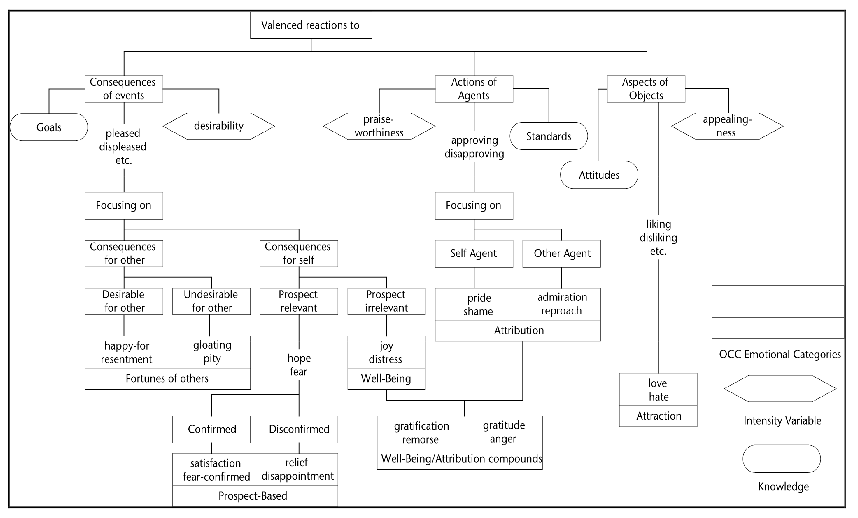This is an old revision of the document!
Table of Contents
Psychological Models of Empathy
Part of Project Lirec: Notes from “Concepts and Evaluation of Psychological Models of Empathy” (Extended Abstract), Enz. S., Zoll, C., Diruf, M., Proc. 8th Int. Conf. on Autonomous Agents and Multiagent Systems (AAMAS 2009), Decker, Sichman, Sierra, and Castelfranchi (eds.), May, 10– 2009, Budapest, Hungary, pp. XXX-XXX. http://lirec.eu/biblio/1703
Types of Empathy
- Cognitive empathy - an understanding of other's internal state
- Affective empathy - includes the emotional reaction to other's internal state
Emotional Contagion
Affective empathy can come from cognitive empathy, but can also come from direct transfer of emotions - “emotional contagion”. This is important for social identity and group dynamics - eg. a herd needing to react quickly to the presence of a predator, which may only be spotted by a few individuals.
Emotional contagion may result in different immediate responses in more complex situations, such as 'gloating'.
Empathic processes
The separation of empathy into cognition and it's results are important because the outcomes can also be seen as the result of other processes.
Non-cognative processes
- Pre-verbal links
- Early in life - babies cry in presence of other crying babies.
- Motor mimicry, simply following other's gestures creates an emotional link - also used later in life.
Simple cognitive processes
- 'Classical conditioning' sharing an intense emotional experience with another person, allows you to learn the connection between responses and situations. Later you can relate a similar response in another person with the event you've experienced.
- Internal labeling of situations with appropriate responses.
OCC Theory (used for FAtiMA)
- Appraisal of events → Emotions

